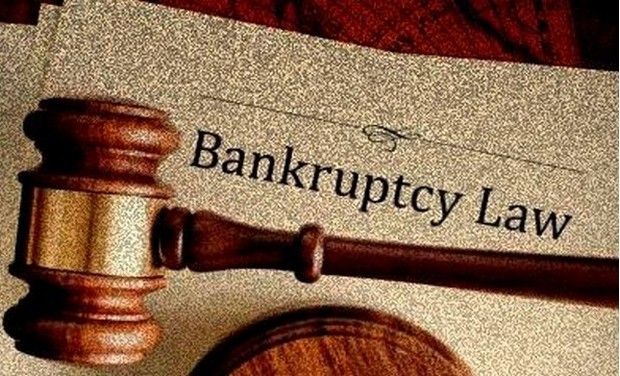Supreme Court Clarifies the Term “Existence of Dispute” under the Insolvency and Bankruptcy Code

In a latest judgement passed by a division bench comprising of J. R.F. Nariman and J. Sanjay Kaul, the Supreme Court of India has clarified the interpretation of the term ‘dispute’ under the Insolvency and Bankruptcy Code 2016(“Code”) to include dispute raised by the operational debtor prior to the issue of demand notice, even though no suit or arbitration is pending in respect of such dispute.[1]
The fact of the case was that the appellant, in the present appeal before the Supreme Court, had sub-contracted certain T.V. related work to the respondent. The respondent was bound by a Non- Disclosure Agreement (“NDA”) with the appellant. The appellant withheld certain payments due to the respondent on the ground that the respondent had breached the NDA by disclosing the contract in its website. The appellant and respondent exchanged mail communication during the period between 2015-2016, in which the appellant alleged breach of NDA by the respondent as the reason for non payment of its invoices. However, the appellant had filed no suit or arbitration in this regard. Meanwhile, the Respondent sent a demand notice to the appellant under the Code demanding the payment due under the sub-contract.The appellant send an email to the respondent stating that there existed a bona fide dispute between the parties due to the breach of NDA.
National Company Law Tribunal (“NCLT”), the adjudicating authority under the Code, dismissed the respondent’s application for initiating corporate insolvency resolution process against the appellant on the ground that the appellant had raised a dispute against the claim of the respondent. However, on appeal, National Company Law Appellate Tribunal (“NCLAT”) reversed the order of NCLT on the ground that the dispute claimed by the appellant was vague and motivated to evade the liability of the appellant. The current appeal was filed before the Supreme Court against this impugned order of NCLAT.
The appellant argued that the moment there exist a real dispute, and not a sham or frivolous dispute, the application for insolvency resolution has to be dismissed.
The respondent, on the other hand, contended that the appellant’s claim of breach of NDA would not fall under the definition of ‘dispute’ under the Code because it is only a claim for unliquiated damages which does not become crystallised until legal proceedings are filed. The Respondent argued that since the appellant had not commenced any legal or arbitral proceeding in respect of the NDA, no real dispute exists between the parties. The respondent further contended that in order to qualify as a ‘dispute’ under section 5(6)of the Code, the dispute should fall under any of the following three categories namely:- the existence of amount of debt; quality of goods or services; or breach of representation or warranty. The respondent contended that breach of NDA does not fall under any of these categories.
The Supreme Court observed that the adjudicating authority shall reject an application for corporate insolvency by an operation creditor, if a notice of dispute has been received by the operational creditor. Such notice of dispute shall bring to the notice of the operational creditor the ‘existence of a dispute’ or the fact that a suit or arbitration proceeding relating to a dispute is pending between the parties. The Supreme Court examined section 8(2) (a) of the Code while interpreting the term ‘existence of a dispute’. Section 8(2)(a) of the Code is extracted below:-
“[e]xistence of a dispute, if any, and record of the pendency of the suit or arbitration proceedings filed before the receipt of such notice or invoice in relation to such dispute”.
The Supreme Court observed that the legislative intent was that the word ‘and’ occurring in section 8(2) (a) must be read as ‘or’. Otherwise, only a dispute pending before a court or arbitral tribunal can stop insolvency proceedings and not any other type of dispute. This would lead to great hardship; for instance a dispute may arise a few days before triggering the insolvency process, in which case, though a dispute may exist there is no time to approach either a court or arbitral tribunal.
Therefore, the adjudicating authority only has to examine, at the stage of admitting or rejecting an application, whether there is a plausible contention which requires further investigation and the ‘dispute’ raised by the operational debtor is not a patently feeble legal argument or an assertion of facts unsupported by evidence. However, while doing so, the adjudicating authority is not required to satisfy whether the dispute would ultimately succeed or not. So long as dispute truly exists in fact and is not spurious, hypothetical or illusory the NCLT has to reject the application.
The Supreme Court also examined definition of ‘dispute’ under section 5 (6) of Code to consider whether dispute should fall under the three categories of:- the existence of amount of debt; quality of goods or services; or breach of representation or warranty. Section 5(6) of the Code is reproduced below:-
“Dispute” includes a suit or arbitration proceedings relating to— (a) the existence of the amount of debt; (b) the quality of goods or service; or (c) the breach of a representation or warranty;
The Supreme Court refused the contention of the respondent that breach of NDA is not a ‘dispute’ under the Code as it does not fall under any of the above three categories on two grounds. Firstly, the definition of dispute under the Code is inclusive one and secondly, section 5(6) only deals with suits or arbitration proceedings which must “relate to” one of the three categories, directly or indirectly. The present is not a case of a suit or arbitration proceeding filed before receipt of notice. The Court held that so long as there is a real dispute between the parties it would fall under the inclusive definition of dispute under section 5(6) of the Code. Hence the email sent by the appellant to the respondent prior to the demand notice stating the breach of NDA as non-payment of dues satisfied the test of an ‘existing dispute’ within the meaning of the Code.
The Supreme Court concluded that the appellant established a plausible contention which is not feeble or unsupported by evidence. Hence a real dispute exists between the parties, which may or may not succeed ultimately. The NCLAT was wholly incorrect in characterizing the dispute as vague. Accordingly, the Supreme Court affirmed the view taken by the NCLT of dismissing the application for corporate insolvency.
[1] Mobilox Innovations Private Limited Vs. Kirusa Software Private Limited CIVIL APPEAL NO. 9405 OF 2017
By entering the email address you agree to our Privacy Policy.



